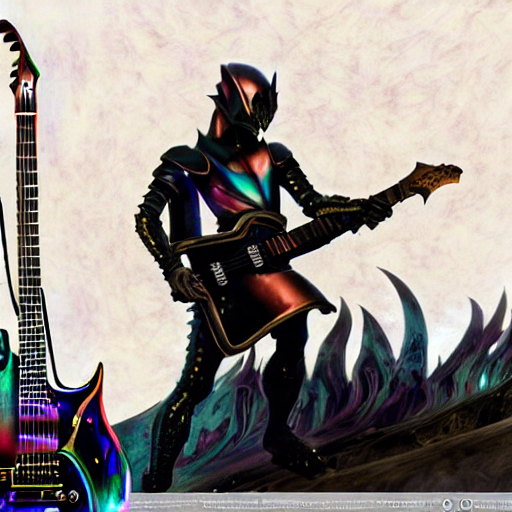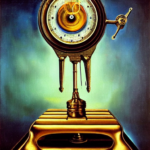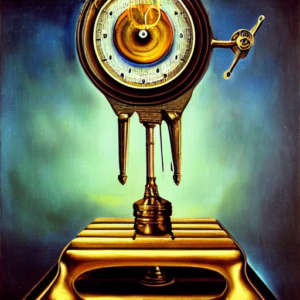The Challenge of Odd Time Signatures
As a guitar player, one of the most thrilling challenges you can set for yourself is to master the art of shredding in odd time signatures. The technicalities and intricacies of playing in these unusual rhythms can push your abilities to the limit, and the results can be truly awe-inspiring. This can be heard in all its glory in the incredible playing of modern progressive shred masters. But what exactly are odd time signatures, and why are they so challenging for shred guitarists?

What Are Odd Time Signatures?
In music, a time signature is a symbol written at the beginning of a piece of sheet music that indicates the number of beats in a measure and the type of note that gets the beat. The most common time signature is 4/4, which means there are four beats in a measure and a quarter note gets the beat. However, some pieces of music are written in time signatures that are not divisible by two, such as 5/4, 7/4, or 11/4. These time signatures are known as “odd” time signatures, and they can be incredibly challenging for musicians to play.
Auto Amazon Links: No products found. http_request_failed: A valid URL was not provided. URL: https://ws-na.amazon-adsystem.com/widgets/q?SearchIndex=All&multipageStart=0&multipageCount=20&Operation=GetResults&Keywords=B07LFVLQ7T&InstanceId=0&TemplateId=MobileSearchResults&ServiceVersion=20070822&MarketPlace=US Cache: AAL_ad193b87dc9386e512c8e9dbbd97fc48
The Difficulty of Shredding in Odd Time Signatures
Shred guitar, a subgenre of heavy metal, is characterized by fast, highly technical guitar solos that often incorporate techniques such as alternate picking, sweep picking and two hand tapping. These techniques are difficult enough on their own, but when combined with the complexities of odd time signatures, they can be downright mind-boggling.
One of the biggest challenges of shredding in odd time signatures is keeping a steady tempo. Unlike in 4/4 time, where the beat is divided evenly into four equal parts, the beats in odd time signatures are divided in a way that can feel jarring and disorienting. This can make it difficult to maintain a consistent tempo and can lead to mistakes.
Another challenge is the difficulty of coordinating techniques like sweep picking and two hand tapping with the uneven rhythms of odd time signatures. These techniques rely on precise timing and muscle memory, and when the timing is thrown off, it can be incredibly frustrating to try and make them work.

Overcoming the Challenges of Odd Time Signatures
So, how can a shred guitarist rise to the challenge of odd time signatures? One of the most important tools is a metronome. It is important to use a metronome when practicing to keep a steady tempo, and to gradually increase the tempo as you become more comfortable with the rhythm.
Another crucial aspect is to focus on economy picking which allows the player to play faster in odd time signatures. Alternate picking is obviously also important to master as it is a fundamental technique for shred guitar.
An excellent video by BERNTH on how to write in odd time signatures for shred style
Conclusion
Exploring the limits of shred guitar with odd time signatures is not for the faint of heart, but for those who are willing to put in the time and effort, the rewards can be truly breathtaking. With a metronome, a focus on techniques such as economy picking, outside picking and alternate picking, and a lot of patience and practice, you can master the art of shredding in odd time signatures. And when you do, you’ll be able to create music that is both mind blowing and truly unique.
Shred on!










 Quality Gear for Optimal Guitar Tone
Quality Gear for Optimal Guitar Tone
 patterns over and over again, but this can lead to a lack of creativity and musical diversity in your playing.
patterns over and over again, but this can lead to a lack of creativity and musical diversity in your playing.






 manner. However, when used correctly, the metronome does a lot more than help you keep time… it gives you a way to map and measure your progress. That’s one of the secrets that allow musicians to
manner. However, when used correctly, the metronome does a lot more than help you keep time… it gives you a way to map and measure your progress. That’s one of the secrets that allow musicians to 


 you can, but where’s the fun in that? Sweep picking allows you to explore the full range of the guitar neck and create complex and fluid melodies that might not be possible with other techniques. It’s a way to add depth and emotion to your playing and really make your guitar sing.
you can, but where’s the fun in that? Sweep picking allows you to explore the full range of the guitar neck and create complex and fluid melodies that might not be possible with other techniques. It’s a way to add depth and emotion to your playing and really make your guitar sing.




 If you’re reading this, you probably know exactly what alternate picking is. But, just in case you’re a newbie (everyone has to start somewhere) let’s take a second to briefly define alternate picking.
If you’re reading this, you probably know exactly what alternate picking is. But, just in case you’re a newbie (everyone has to start somewhere) let’s take a second to briefly define alternate picking.



 exercises like the ones shown above.
exercises like the ones shown above.